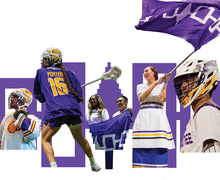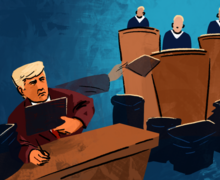Artist educates city residents about Arabic community with calligraphy workshop
Anthony Bailey | Contributing Writer
The first of Odeh’s two scheduled workshops was held on Saturday, with the next iteration planned for Oct. 17.
Get the latest Syracuse news delivered right to your inbox.
Subscribe to our newsletter here.
One of Nada Odeh’s goals for her workshop “Arabic Calligraphy and Vegetal Art” is to get the Syracuse community together to learn about cultures outside of their own, including Arabic culture, Odeh said.
Odeh, a Syracuse-based artist, hopes to bridge the gap between the city of Syracuse and its Arabic community with her workshop, “Arabic Calligraphy and Vegetal Arts.” The workshop helps participants learn about the history of Arabic calligraphy and how to create Arabic calligraphy themselves.
“There is a big Arabic community here, but we also look for people who want … to understand my language. I want people to understand my culture. But it’s not only my culture, it’s the culture of the thousands in Syracuse and central New York,” Odeh said.
Part of the workshop focuses on the origins of Arabic art and how it evolved from its
beginnings around the seventh century A.D. Odeh — who hosted a workshop on Saturday at Salt City Market — will present the workshop again on Oct. 17 from 1-2:30 p.m. at the market.
During the workshops, Odeh presents works from contemporary Arabic artists such as eL Seed and Khaled Al-Saai in the Salt City Market’s community room. The workshop ends with a demonstration on how to create Arabic calligraphy and a chance for participants to learn how to create Arabic calligraphy for themselves.
This workshop came into fruition when Adam Sudmann, the manager of Salt City Market, asked Odeh to present her knowledge of the history of Arabic arts and teach participants how to create Arabic art. Sudmann said he sees his market as a place to not only display the food of other cultures but arts as well.
Sudmann said he hopes that events like the workshop Odeh is hosting will help to remedy the cultural separation seen in the Syracuse community. He said that with Syracuse being one of the most “infamously” segregated cities, events like this are necessary to end the ethnic and racial separation present in the community.
Participants practiced the word peace in Arabic
Thank you @thesaltcitymarket for having me and thanks to @downtownsyracuse for promoting my workshop ❤️❤️
“The good news is that we are a really diverse community,” Sudmann said. “We just don’t have spaces to sort of cross paths. A lot of the magic is there … if we create a space, maybe the magic of our town can draw us into this space”
The workshop on Sunday will be the second one done by Odeh this month. On Saturday, Odeh put on the workshop for an eager audience. Participants at the workshop created their own Arabic calligraphy and were excited to branch out of what they knew.
“I love learning new art techniques,” said Abigail Brunner, a participant at the workshop. “Something different than my job, something I can do for fun. I’m interested in Arabic culture as well, so learning how art interacts with their culture is interesting.”

Odeh showed contemporary Arabic art and demonstrated Arabic calligraphy before giving attendees a chance to try it for themselves.Anthony Bailey | Contributing Writer
Milton Loayza, a professor at SUNY Oswego, also attended the workshop on Saturday. He said he was drawn to it because of his interest in learning about cultures different from his own.
“I wanted to do something relaxing on a (Saturday) and explore something, something different,” Loayza said. “Anything that has engaged people in the arts is important, especially if it’s cross-cultural, intercultural or exploring, and meeting new people. All of this is really, really positive.”
Loayza said he became interested in Arabic art after visiting southern Spain and seeing the historical mosques of Cordoba and Granada. Going to this workshop allowed him to contextualize the art he saw in these buildings, he said.
Although learning how to create some Arabic calligraphy gives participants a new skill to learn about, Odeh said she understands they will not become masters overnight, especially if they don’t know the language. Writing in Arabic calligraphy is not easy and not knowing what you’re writing only adds to the difficulty, Odeh said. She hopes, however, that participants will get more out of the workshop than just a new skill.
“I want to focus more on visual arts and Islamic arts and how we can create patterns and motifs out of it,” Odeh said. “Maybe we can build something together that lets this culture have something unique here in central New York. So, hopefully, things will be nicer, will be better.”
Published on October 11, 2021 at 12:22 am






